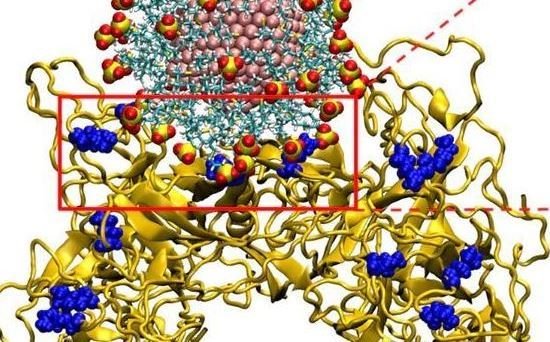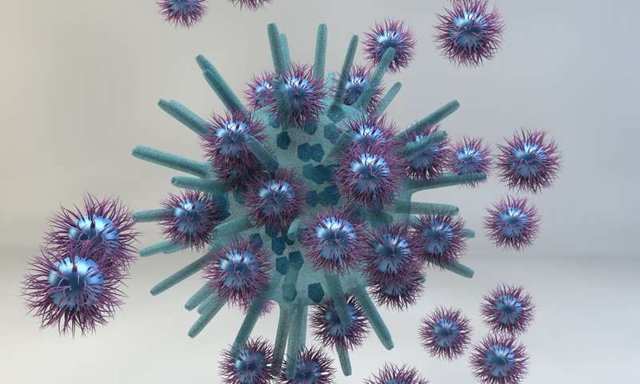Nano-Technology Can Aid The Eradication of Viruses and Viral Infections
All over the world, humans battle against various diseases and infections of different forms. Viral infections have been a major killer of people for ages. Yearly, people battle against viral infections; sometimes winning through some available antiviral drugs; other times losing and succumbing to the cold hands of death.
Available antiviral drugs are limited in their fighting abilities against viruses. Most of the currently used antiviral drugs are only capable of dealing with handful of non-aggressive related viruses. And in most cases, these drugs need to be taken on a regular to help prevent infections.
However, viruses have also become smarter and through mutative abilities, most viruses have developed strong resistance against some currently used antiviral drugs, posing serious risk to human health. This brings us to the nagging issue of “how do we tackle mutating viruses and viral infections”?

Nano Technology offers solution
Well, a recent move by a group of international researchers is set to change the trend. Nanotechnology is no longer just a feature of Hollywood sci-fi movies. Nano technology and engineering is here with us, and it is as real a day.
Nanotech is currently at the forefront of medical revolution, because a number of researches in recent years, points to the fact that nanotech may be a vital tool in tackling some of the diseases caused by common microorganisms; the likes of bacteria and viruses, which have often proven too tough to eradicate via our present day anti-bacterial and antiviral drugs.
Thankfully, in recent years, scientists have been able to adopt nanotechnology to develop nanoparticles which can travel through human body and also settle and target specific cells or tissues, as directed.
Nano Particles
Recent efforts by a team of international researchers including Petr Kral who is a UIC professor of chemistry and Lela Vukovic, an assistant professor of chemistry at the University of Texas at El Paso, have resulted in the creation and development of new “antiviral nanoparticles” which have shown the potential to relegate our relatively underperforming antiviral drugs to the back stage.
A model depicting an antiviral nano-particle binding to the outer envelope of the human papillomavirus 
Source

Currently our antiviral drugs function by warding off viruses on a broad spectrum; however the drugs do not destroy the viruses. But the new antiviral nanoparticles have displayed an ability to kill off harmful viruses during the testing phase.
The way the Nanoparticles Work
The new antiviral nanoparticles functions by mimicking heparin sulfate proteoglycan (HSPG), which is a cell-surface protein through which several viruses including HIV gain access and infect healthy body cells. The viruses infect the healthy cells by binding themselves to HSPGs on the surface of the cell.
Our present drug therapies and procedures that mimic the behavior HSPG stick to viruses and therefore prevent them from binding themselves to cells. However, when the bond between the drug and the virus gets weak, the virus can then have access to enter the cell.
Image depicting a simulation of a nanoparticle attack on a virus. (Credit: ©SUNMIL/EPFL) 
Source

But the new nanoparticles have shown better efficacy; because they are able to bind more tightly to a virus and also go a step further to destroy it.
Technique for designing the nanoparticles
In designing the new antiviral nanoparticles, the team of researchers relied on advanced level of computational modelling to develop the structures of various target viruses and the nanoparticles as well. The precise structures created via the computational modelling also aided the location of each atom.
A test on herpes simplex virus revealed that in-vitro experiments prove that the nanoparticles bound itself irreversibly to the herpes simplex virus, Dengue virus, human papilloma virus and other viruses. The nanoparticles were able to deform the viruses lethally, but caused no damage or effect on healthy cells or tissues.
Conclusion
The result of the nanoparticle study and experimentation definitely proved that there is a broad and far-reaching effect of the new antiviral nanoparticles, as a potent weapon against viral infections.
Both Petr Kral and Lela Vukovic, along with their group of researchers worked hand-in-hand with other medical experts such as virus experts, experimentalists and biochemists from France, Italy, Czech Republic and Switzerland, in order to custom-design the anti-viral nanoparticles.
The new medical breakthrough via nanotechnology goes a long way to prove that there is soon going to be an end to the menace of viruses and infections which have plagued so many people, and claimed so many lives.
Study: Paper
Reference:
Further Reading:
- https://www.aiche.org/chenected/2018/01/nanoparticle-designed-destroy-harmful-viruses
- https://newatlas.com/nanoparticle-antiviral-virus/52667/
Thank you for your time and for reading my post.
If you found this post interesting, then kindly UPVOTE, RESTEEM and FOLLOW @rickie, for more quality posts.
You Can Check Out My Other Posts Below:
- The First Battery-Powered Aircraft Has Taken Its First Flight
- Windows Of Buildings Can Become Transparent Solar-Power Generators Via Technology
- Some Of The Strangest and Unusual Phobias Existing Today
- Studies Show That Anaesthetics Do More Than Just Induce Sleep
- Proper Exercise Can Reverse Damage To An Aging Heart
- Smelling Your Partner's Shirt Can Help Reduce Stress Levels

It is probably hard to say when will nanotech become available for use, as preclinical and clinical research could take some time before WHO approves. It would most certainly be an revolutionary addition to health care, providing the best anti-viral weapon world has ever seen. Implementing nano technology could make current lethal viruses thing of the past. Great article.
I completely agree with you @rivercityguy as to the potency nanotech would bring towards the fight against lethal viruses. I do believe we could envisage clinical use in the next 5 to 20 years though. I don't think the world wants to wait any longer...lolz. Thanks for reading @rivercityguy
Nanotechnology is your future
Lolz.....it sure is @enigma5001. Thanks for reading
This post has received a 11.76 % upvote from @aksdwi thanks to: @rickie.